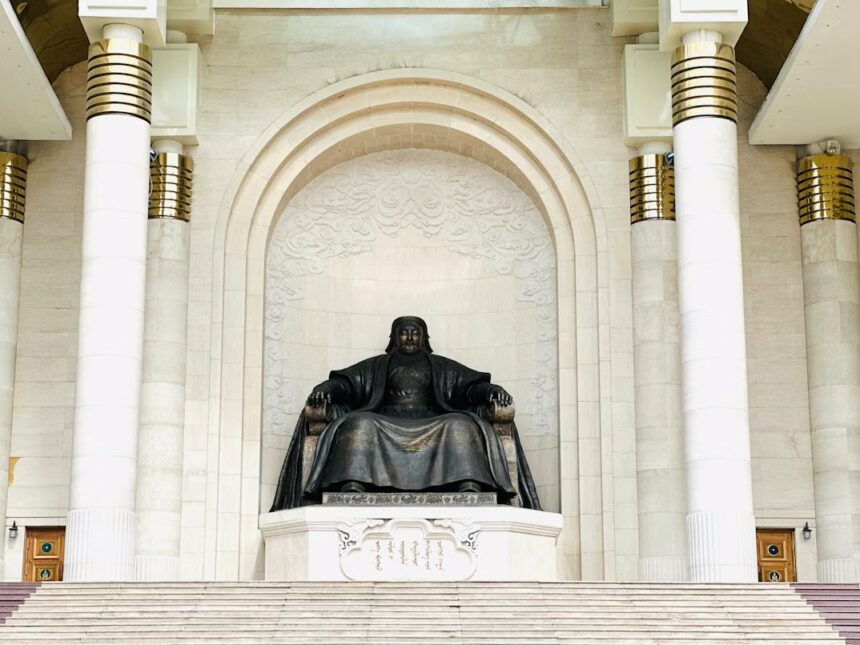Nestled across Mongolia’s wide-open grasslands, Chinggis Khaan International Airport (UBN) isn’t just growing – it’s aiming big. Since opening in 2021, it’s been adding features like bigger freight zones and fresh overseas flights. Its target? Handle 2.4 million people by the end of 2025, just above today’s limit of 2.3 million. Travelers can expect to enjoy easier trips through updated Silk Route corridors but still, some concerns cast a shadow over this exciting development.

What’s behind the growth? Pushing to become a key spot in the area
Mongolia’s flight network is expanding quickly – tourists are returning, mining exports are climbing, while its location between China, Russia, and Europe adds extra pull. A joint effort by Mongolian and Japanese companies manages the airport, backed by about 500 million USD from Japan’s development fund to upgrade cargo zones and reinforce runways. Travel surged once restrictions faded; flyers are coming back since borders opened wider – even short-term visitors can enter visa-free for up to 72 hours.

Leaders see bigger economic perks – better air links could boost foreign trade or tourism, key where flights tackle isolation. The shift aligns with Mongolia’s goal to connect distant areas worldwide, though harsh winter weather still gets in the way.
Inside the Airport: Modern Features for Global Travelers
UBN’s sleek terminal covers 68,000 sq m, designed for quick moves while handling large jets like the 787. Inside, you get check-in screens instead of counters, local art on walls, along with chill zones dishing out regional meals. Fresh upgrades – take Maple Tree Park, planted in 2025 – slip greenery into urban life even when snow piles up.
Travelers enjoy hassle-free connections, like quick layovers on European routes – paired with nifty features including facial recognition gates. By 2025, Skytrax ranked it among the world’s fastest-improving hubs, climbing to sixth place due to upgraded facilities and smoother operations. But behind that glow, are deeper issues lurking? Online discussions show mixed feelings – people praise the modern look but question urban sprawl.

New Routes and Schedules: Bridging Continents
Mongolia’s main airline, MIAT, is growing by adding fresh paths to Europe. Flights to Frankfurt are back – now operated by a Boeing 767-300ER from Omni Air International every so often each year. Instead of connecting elsewhere, people will soon fly straight to Singapore or Shanghai starting in 2025. These direct trips kick off right before busy travel seasons heat up.
Take a look at key MIAT routes:
Flights from Ulaanbaatar (UBN) to Frankfurt (FRA) happen three times weekly in summer, run by Omni with Boeing 767-300ERs – making it simpler to get around Europe. Instead of connecting elsewhere, travelers go direct to Singapore (SIN) twice a week starting November 2025, same plane model, boosting access within Asia. Daily trips link Ulaanbaatar (UBN) and Istanbul (IST), operated with Boeing 737s throughout the year, focusing on smoother business travel options.
United Airlines joined in 2025, connecting via Tokyo. Because of this shift, UBN is becoming a key hub where travelers can now book journeys – ideal for those eyeing the Gobi Desert or far-off herding trails.

Public Reception
Checking social media for local opinions brings both optimism and caution. Chatter online reveals excitement over global spotlight – someone mentioned new travel routes might draw way more tourists – but gripes are there, like pollution in Ulaanbaatar rising due to work near the airport. Come 2025, close to twenty thousand signed a call for tighter oversight on construction, citing louder streets, shrinking green areas, and worsening traffic jams across town.
When trying to go eco-friendly, the airport shows what it’s doing: MIAT joined forces with OpenAirlines to cut fuel use, which drops CO₂ levels, whereas Maple Tree Park tackles soil damage. Yet broader research reveals Mongolia’s transit network has a hard time handling climate changes – harsh winters, for example, throw off flight plans. A few campaigners question if recent builds match Ulaanbaatar’s goal of greener development; despite solar panels at the hub helping out, specialists argue deeper emissions reductions are needed since more flights have been launching recently.
What comes now? Moving forward, UBN could make Mongolia a key transit spot – thanks to a fresh economic zone designed to lift job chances and bring in cash. Some pros expect 3 million passengers by 2027, but the true challenge is growing without wrecking emission goals. One politician stressed at climate discussions: charging ahead isn’t smart if it endangers environmental safeguards.

Conclusion
Chinggis Khaan International is rising fast, showing how Mongolia’s looking skyward – giving visitors new ways to reach wild landscapes while testing global links. Still, our look reveals mixed views: hopeful residents want jobs and growth, but others push for cleaner plans that include everyone.
Can this airport grow without harming nature, or will problems slow it down? Let us know what you think below – and keep checking Travel Radar for real updates on air travel.







